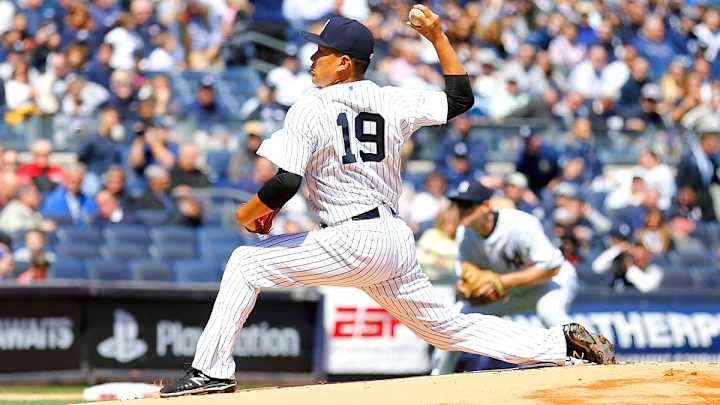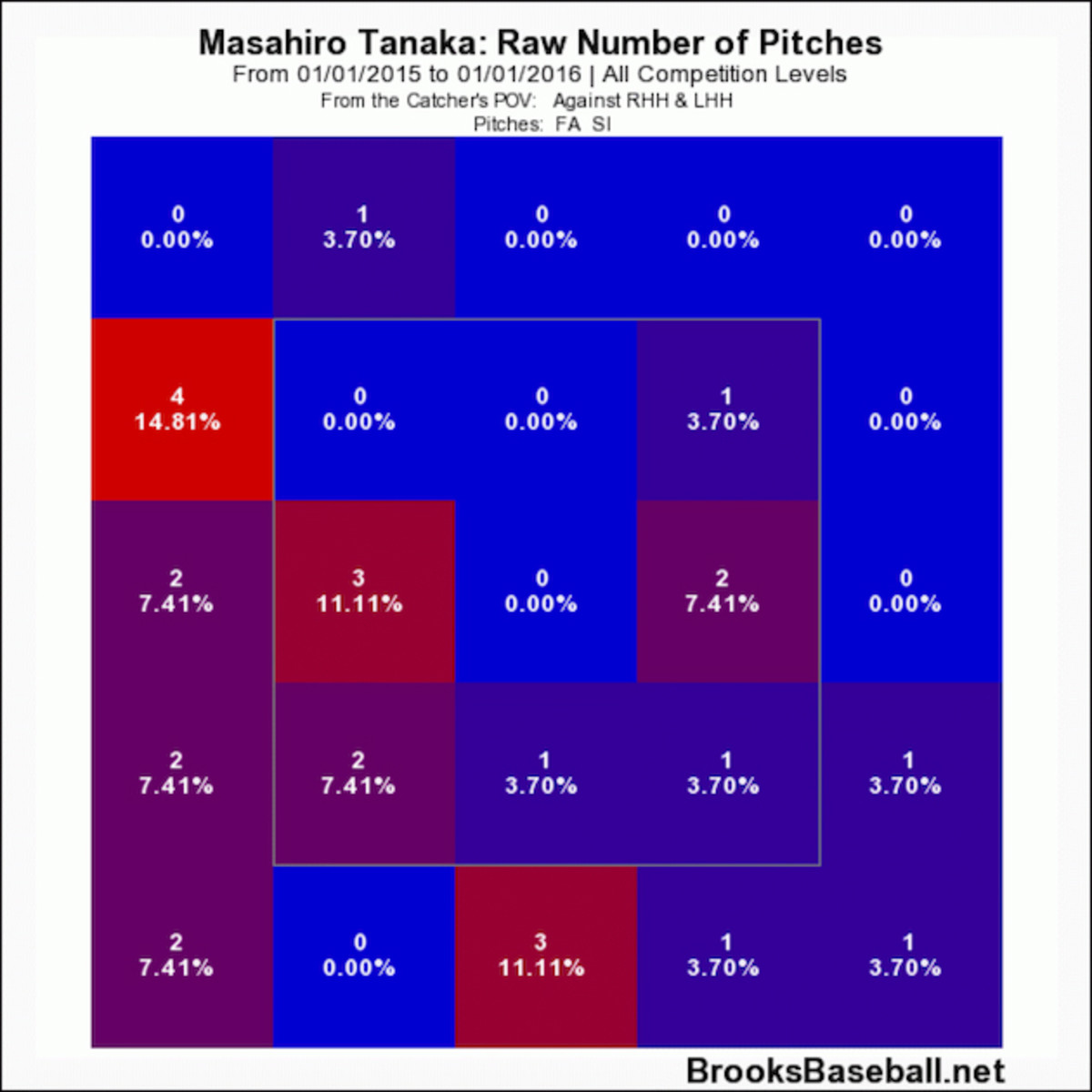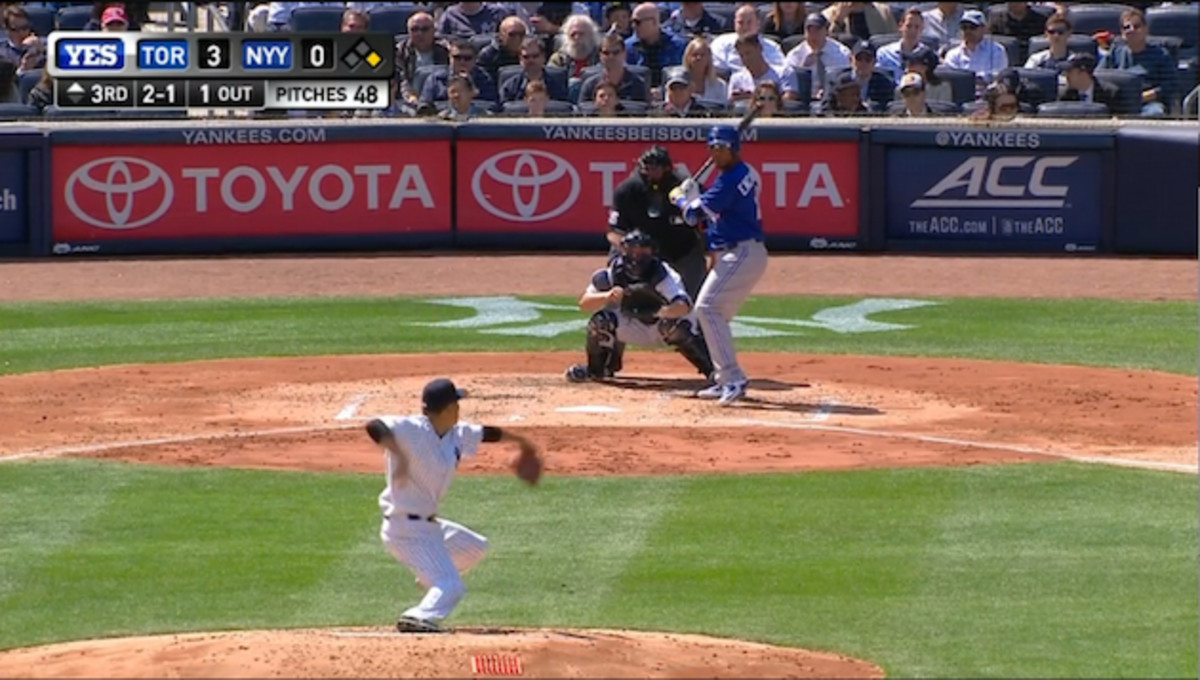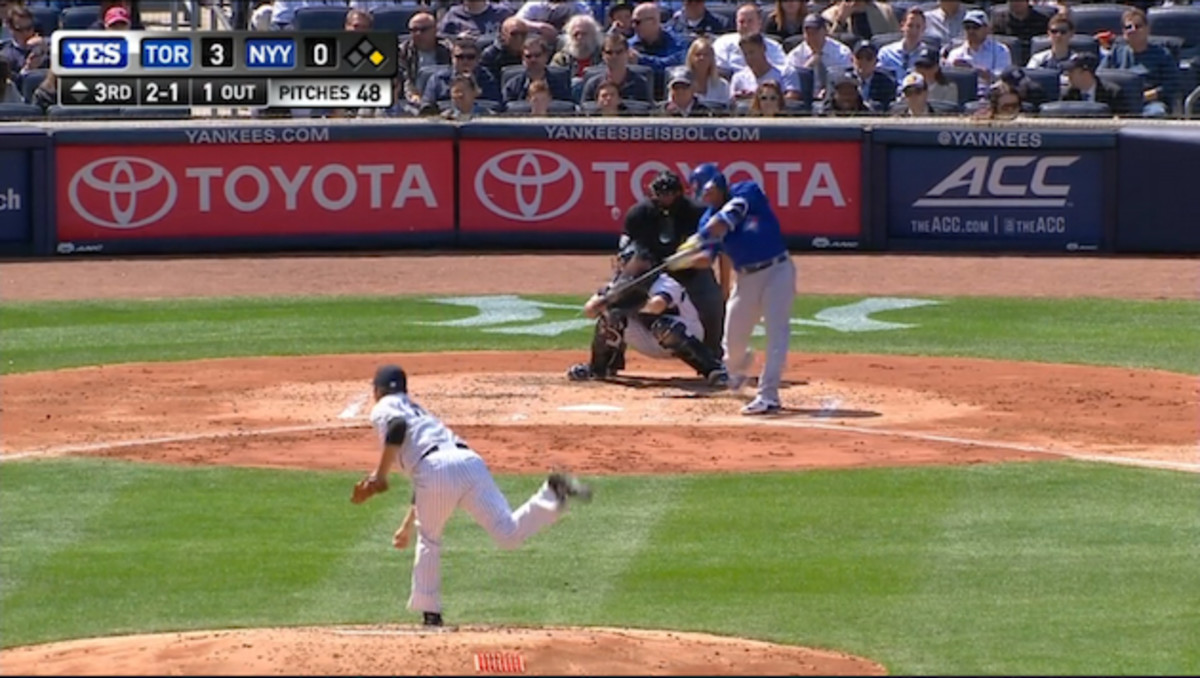Pitcher Scouting: Breaking down Tanaka's lackluster Opening Day start

Opening Day starts rarely live up to the hype. For every Sonny Gray, there’s at least one Jon Lester. Expectations get heaped upon that first start because, for the time being, it represents 100 percent of the season. Ultimately, however, it will be just one of approximately 30 times each pitcher takes the mound this season, so it’s important not to get too wrapped up in the results.
Pitching Report: Sonny Gray emerges as one of the stars of Opening Day
That anticipation was higher for Masahiro Tanaka than most pitchers earlier this week. Tanaka was neck and neck with Jose Abreu in the AL Rookie of the Year race for the first few months of the season last year, but had to shut it down in mid-July because of an elbow injury. He made two starts in late September, an oddity at the time which seems borderline indefensible seven months later. Those may technically represent return from a partially torn UCL, but the turning of the calendar gives us a neater transition to something new. Tanaka’s Opening Day outing against the Blue Jays felt more like his comeback than those twin trips to the mound in the final stages of the Yankees’ disappointing 2014 season.
Purely from a results standpoint, Tanaka didn’t have quite the day he was hoping for. He surrendered four runs on five hits—including a home run by Edwin Encarnacion—and two walks in four innings. He did fan six batters, but all those whiffs drove his pitch count up to 82 through his four frames. Again, the results weren’t exactly what anyone, other than perhaps the Blue Jays, was hoping to see. However, there’s room for optimism here that goes well beyond the fact that the start represents about 3.3 percent of Tanaka’s season.
First, let’s consider Tanaka’s velocity. It was a concern this spring, as it would be with any power pitcher with a recent elbow injury. In his first start, Tanaka suggested those fears would be completely unfounded. Last year, his four-seam fastball averaged 92.74 mph, according to Brooks Baseball, while his two-seamer checked in at an average of 91.44 mph. On Monday, they were at 92.63 mph and 91.14 mph, respectively. The max speed on each offering was down a couple ticks, but that likely has more to do with the fact that it was his first start of the season than anything else.
Don't panic: Should these pitchers be worried after horrid 2015 debuts?
Tanaka also threw 22 two-seamers and just five four-seamers. Last year, he threw four-seam fastballs 21.34% of the time and two-seamers on 19.49% of his offerings. According to Tanaka himself, that ratio will flip this season, which is reason not to worry about his velocity just yet. But at the same time, the Blue Jays put four of Tanaka’s 27 combined four- and two-seamers in play, going 3-for-4, including Encarnacion’s aforementioned home run. He also got zero whiffs on the hard stuff. Last year, both the four-seam and two-seam fastballs had a swinging-strike rate north of 5%. So what was the problem? Location.
Below is the zone profile of Tanaka’s two breeds of fastball from the start. You can see that when he missed with it, he did so in an area that typically is easy for hitters to lay off, either way in to a righty or outside to a lefty. While missing with a fastball is usually a purpose pitch to set something else up, you’re not going to get whiffs on those kinds of pitches. Missing high with a fastball is a pitcher’s best bet to goad a hitter into an empty swing, but Tanaka didn’t challenge the Blue Jays above the zone with his fastballs.

Simply put, Tanaka missed in the zone too frequently with his fastballs. The best case, as you might imagine, was on Encarnacion’s homer.
Clearly that pitch caught far too much of the plate. What you might not be able to tell in the GIF is where Brian McCann set up to receive the pitch, versus where Tanaka ended up throwing it. We can see that better with the following two screenshots.


This 2–1 offering is supposed to be on the inner third, which would not allow Encarnacion to get his arms extended to drive the ball the way he did. Instead, it floats back over the plate and is basically a center-cut fastball. A hitter like Encarnacion isn’t going to miss one of those very often.
Adrian Gonzalez makes history with early-season homer barrage
Tanaka was the victim of poor command and little else. In fact, had Chase Headley made a routine play on a sacrifice bunt by Jose Reyes earlier in the inning, Tanaka could have been a bit more careful with Encarnacion at the plate. Already down three runs and behind in the count with just one out, however, he had to challenge him.
But wait, there’s more good news from this outing for Tanaka, the Yankees and his fantasy owners. His off-speed stuff, which is really where he makes his living, was quite good. Tanaka features one of the game’s best splitters, and it was on against the Blue Jays. He threw the pitch 25 times, getting nine whiffs. Here it is claiming its first victim of the year, with Reyes going down on strikes to start the game.
This was a three-pitch at-bat. Tanaka started Reyes off with a slider, then doubled up on the splitter, getting him to swing and miss each time and a pitch that ended up beneath the zone. He used a similar mix two batters later, when he got Bautista to strike out to end the inning. He finished off that at-bat with a slider.
All told, three of Tanaka’s strikeouts came on the splitter, and the other three were with the slider. His bread and butter pitches were working against a great lineup. After all, Tanaka will not be the last pitcher to get knocked around by the Blue Jays this season. They could very well end up leading the league in runs scored, and may have the most fearsome heart of an order with Encarnacion joined by Bautista and Josh Donaldson. Tanaka’s velocity was fine, and his command was off. That’s going to happen to every pitcher at some point this season. For Tanaka, it happened on Opening Day. Don’t let that blind you to the things he did well in his first start of the season.
